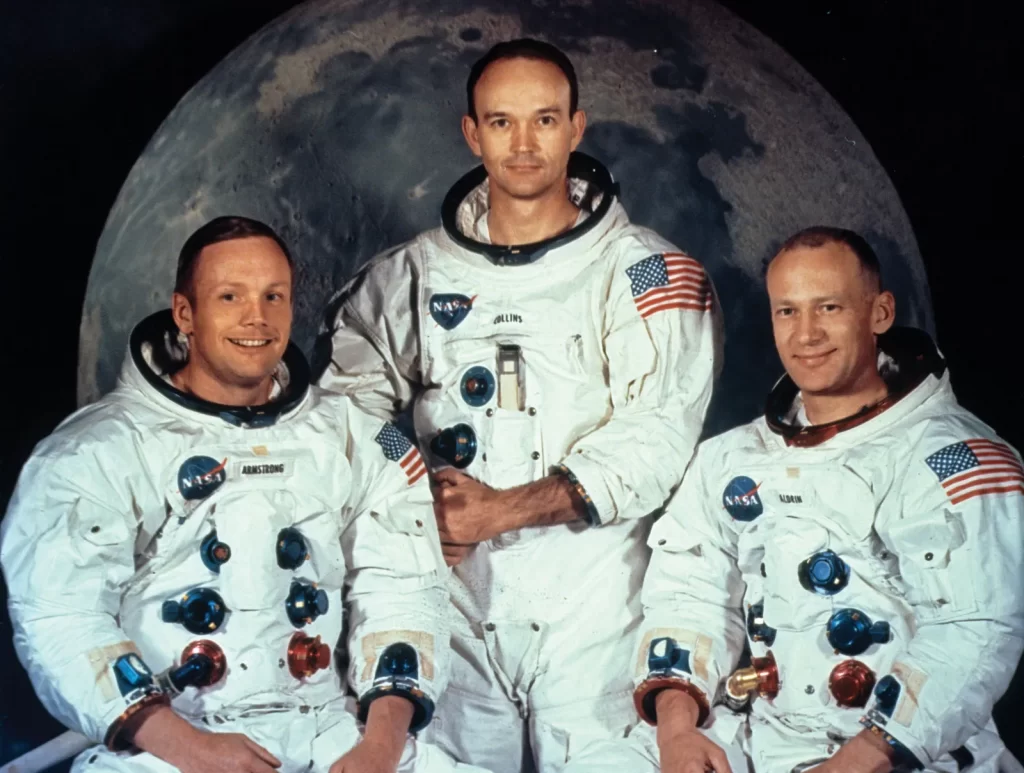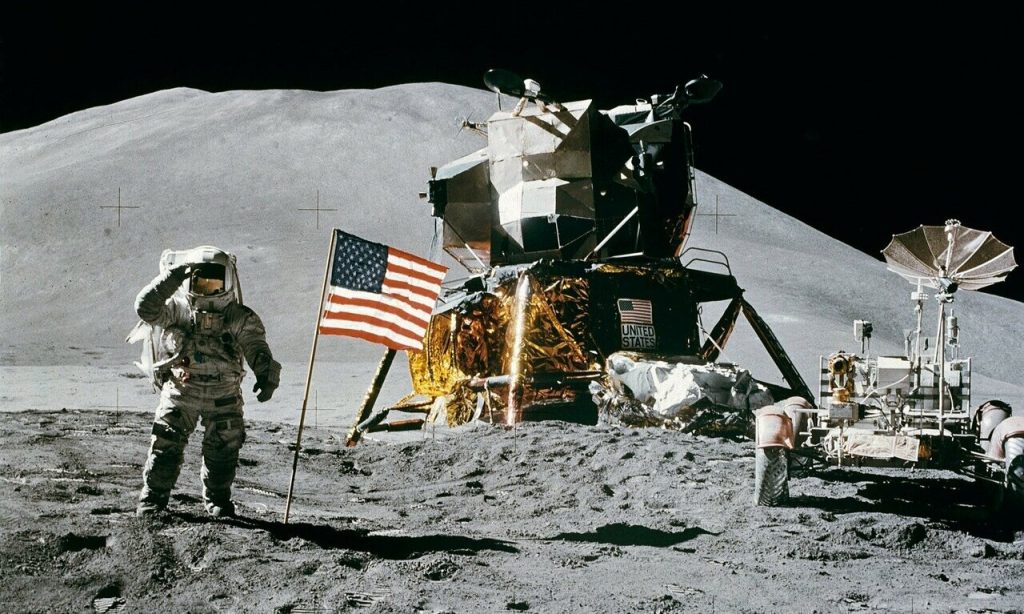In the summer of 1969, the culmination of years of scientific innovation, human determination, and Cold War rivalry reached its zenith as NASA’s Apollo 11 mission achieved what was once deemed impossible—the first successful landing of humans on the Moon. stay with spaceyv.
A Historic Mission
The Crew:
The success of Apollo 11’s historic Moon landing in 1969 was made possible by the exceptional crew of astronauts who ventured beyond Earth’s bounds to achieve a feat that had captured the collective imagination of humanity. The crew of Apollo 11 consisted of three remarkable individuals: Neil Armstrong, Buzz Aldrin, and Michael Collins.

Neil Armstrong – Commander
Early Life and Career:
- Birth and Background: Neil Alden Armstrong was born on August 5, 1930, in Wapakoneta, Ohio.
- Aviation Enthusiast: Armstrong’s fascination with flight began at an early age, leading him to pursue a career in aeronautical engineering.
NASA Selection and Achievements:
- NASA Astronaut: Selected as a NASA astronaut in 1962, Armstrong flew on the Gemini 8 mission before being chosen as the commander for Apollo 11.
- First Human on the Moon: On July 20, 1969, Armstrong became the first person to set foot on the lunar surface, uttering the iconic words, “That’s one small step for [a] man, one giant leap for mankind.”
Post-Apollo 11:
- Legacy: After leaving NASA, Armstrong taught aerospace engineering and remained an advocate for space exploration. He passed away on August 25, 2012.
Buzz Aldrin – Lunar Module Pilot
Early Life and Military Service:
- Birth and Education: Edwin Eugene “Buzz” Aldrin Jr. was born on January 20, 1930, in Glen Ridge, New Jersey.
- Military Background: Aldrin had a distinguished career as a fighter pilot in the U.S. Air Force, flying combat missions during the Korean War.
NASA Selection and Achievements:
- Gemini Missions: Aldrin flew on the Gemini 12 mission before being selected for Apollo 11.
- Second Human on the Moon: On the same historic day as Armstrong, Aldrin became the second person to walk on the lunar surface.
Post-Apollo 11:
- Advocate and Author: Aldrin continued his involvement in space advocacy and authored several books. He remains an influential figure in the space community.
Michael Collins – Command Module Pilot
Early Life and Military Service:
- Birth and Background: Michael Collins was born on October 31, 1930, in Rome, Italy.
- Military Pilot: Collins, a skilled pilot, served as a test pilot in the U.S. Air Force.
NASA Selection and Achievements:
- Gemini Missions: Collins piloted the Gemini 10 mission before joining the Apollo 11 crew.
- Orbital Solo: While Armstrong and Aldrin descended to the lunar surface, Collins remained in orbit around the Moon, piloting the command module.
Post-Apollo 11:
- NASA Leadership: Collins served in various leadership roles at NASA before retiring from the agency. He authored several books and became known for his reflections on the Apollo program.
The crew of Apollo 11 exemplified the courage, skill, and pioneering spirit required to accomplish one of humanity’s greatest achievements—the exploration of the Moon. Their names are forever etched in history as symbols of the triumph of human ingenuity and the exploration of the cosmos.
One Small Step: Neil Armstrong’s Moment
Lunar Descent:
On July 20, 1969, the lunar module approached the Moon’s surface. In a critical moment, Armstrong took manual control to guide the spacecraft to a safe landing site.

“That’s One Small Step…”:
At 2:56 UTC on July 21, 1969, Neil Armstrong descended from the lunar module’s ladder and set foot on the Moon, delivering his iconic words, “That’s one small step for [a] man, one giant leap for mankind.” Buzz Aldrin joined him moments later.
Scientific Exploration and Achievements
Lunar Experiments:
Armstrong and Aldrin conducted experiments, collected samples, and deployed scientific instruments on the lunar surface. These activities provided valuable data about the Moon’s geology and environment.
Return to Earth:
After spending approximately 21 hours on the lunar surface, the astronauts returned to the command module. On July 24, 1969, Apollo 11 safely splashed down in the Pacific Ocean.
Suggested Contents:
Yuri Ggagarin’s Historic Flight
Global Impact and Human Achievement
Symbol of Unity:
The Moon landing became a symbol of human achievement, transcending national boundaries. Millions around the world watched the historic events unfold on television.

Technological Advancements:
The success of Apollo 11 showcased the incredible advancements in technology and engineering, demonstrating the United States’ capabilities in space exploration.
Legacy and Inspiration:
Apollo 11’s legacy endures as a testament to human innovation and determination. It inspired subsequent lunar missions and fueled the ongoing quest for space exploration.
Looking Ahead
Space Exploration Today:
The legacy of Apollo 11 lives on in contemporary space exploration efforts, including robotic missions, plans for lunar return missions, and the aspirations for crewed missions to Mars.
International Collaboration:
The collaborative spirit of Apollo 11 has evolved into international partnerships, with agencies worldwide contributing to space exploration endeavors.
In Conclusion
The Apollo 11 Moon landing of 1969 stands as a defining moment in human history—a moment when humanity transcended the confines of Earth and reached for the stars. It remains a symbol of ingenuity, courage, and the indomitable spirit of exploration that continues to drive our quest for understanding the cosmos. thanks for staying with us



